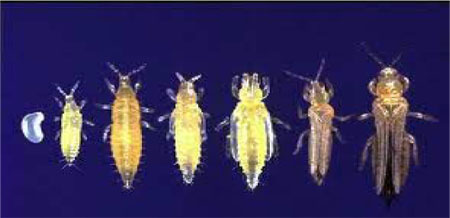Understanding western flower thrips
Warmer greenhouse temperatures, higher relative humidity, longer days and lots of flower pollen are factors for an increase in thrips populations.
It’s that time of year when a wrench gets thrown into your “thrips management system.” Every year I get a call from a superior grower who was confident that their thrips population was under control until that one day, overnight, the yellow sticky card went from 4 thrips to over 100. Where did they come from and what do you do now?
I’ve been struggling with the question as to where did they suddenly come from, since Frankliniella occidentalis Western flower thrips do not overwinter outdoors in Michigan, the greenhouse has been heated for weeks, artificial lights have provided long-days, the greenhouse was empty for months with no plant material or weeds, and the plant material purchased has been carefully inspected and treated or monitored. Other than that, they could have been in diapause on the floor, because preliminary research isn’t supporting the hypothesis.
Western flower thrips are the most prevalent thrips affecting our spring bedding plant crops in Michigan. These pests are complex and can be difficult to get under control if you do not completely understand their life cycle.
First thing is to recognize that temperature is what determines the rate of development. Western flower thrips can survive at 50°F but they do not develop. The optimum temperature of development is between 68° F to 98°F where they can go from egg to adult in as quick as seven days and up to 15 days. Knowing this information makes insecticide application timing important. When there is a high population of thrips with all life stages present, 3 to 5 applications in a 10-day period may be needed to obtain the mortality desired.
The six life stages are:
- Egg - Laid in the plant tissue for two to four days.
- First instar - Immature, feeding stage of one to two days.
- Second instar - Immature, feeds then drops off plant to pupate in media or soil, lasts two to four days.
- Prepupal - Non-feeding, in the media or soil for one to two days.
- Pupal - Non-feeding, in the media or soil for one to three days.
- Adult - Feeding and mobile for 30 to 35 days.

From left to right: egg, first instar, second instar, prepupal, pupal and adult.
Secondly, thrips need food for survival. The female’s primary food is pollen, which provides the essential nutrients that enhance development and reproduction capability. It is well documented that thrips desire plant material that is nitrogen abundant, like newly, unfolded, leafy plant tissue possesses. In the greenhouses, we have adequate food sources. However when you are not producing plants it is imperative to use sanitation practices and remove all plant material, debris and weeds to eliminate food for survival. If you do not have thrips in your plants now, make sure to check weeds under benches and along interior walls for the presence of thrips larvae.
Management
There are different strategies based on western flower thrips population and plant production.
Scenario One: You just began to receive transplants or sawing seeds.
Scouting is imperative on plant material that you are bringing in. Place in an area segregated from your “insect free” area. Do a visual inspection, place yellow sticky card in the crop and monitor. Remember, if the temperature is 65°F or warmer, the adults should be active and may be present on the card in 7 to 15 days; immatures will be active on the foliage after 5 to 10 days.
Biological control. This is a great time to get started releasing beneficials. If you purchase products from another greenhouse or producer, find out what they have treated the plants with, because beneficials are sensitive to many pesticides.
Scenario Two: You are at full production, plants are flowering and you are shipping soon. The population is over your threshold on the cards and you see activity on the plants.
Insecticide application is warranted at this point and you should spray using a high volume sprayer to get good coverage of the foliage and the best flower penetration as possible without shattering blossoms. The applications should be made at a 3- to 4- day interval with at least 3 applications. This is aggressive, but will cover newly emerged immatures and adults reducing reproduction. Wondering what products to use? Visit David Smitley’s article, Greenhouse Insect Management for 2011, for recommendations.
Biological control. It is very difficult to begin a biological control program at this point of your production cycle. Releasing beneficials early in the cropping cycle allows them to become established and have the ability to provide control.
A special thanks to Terry Davis, research assistant in the Department of Entomology, for his input and review.



 Print
Print Email
Email


